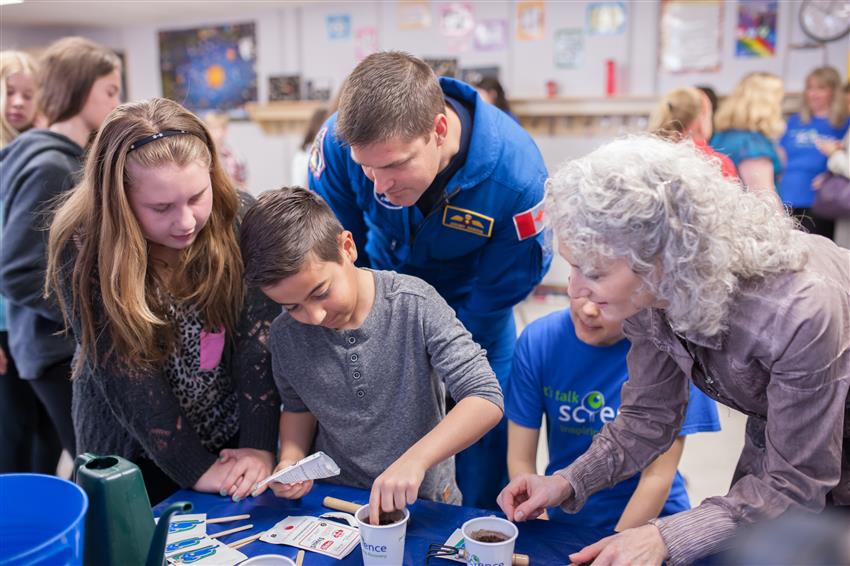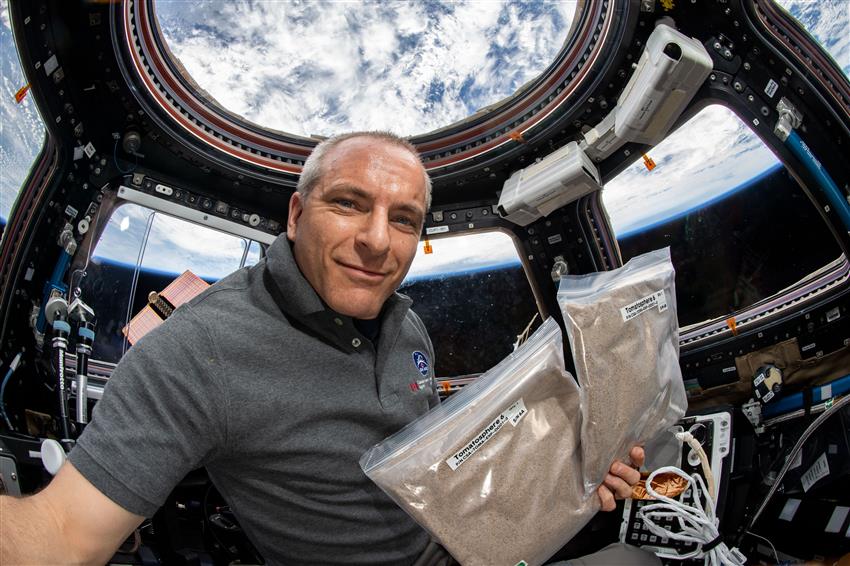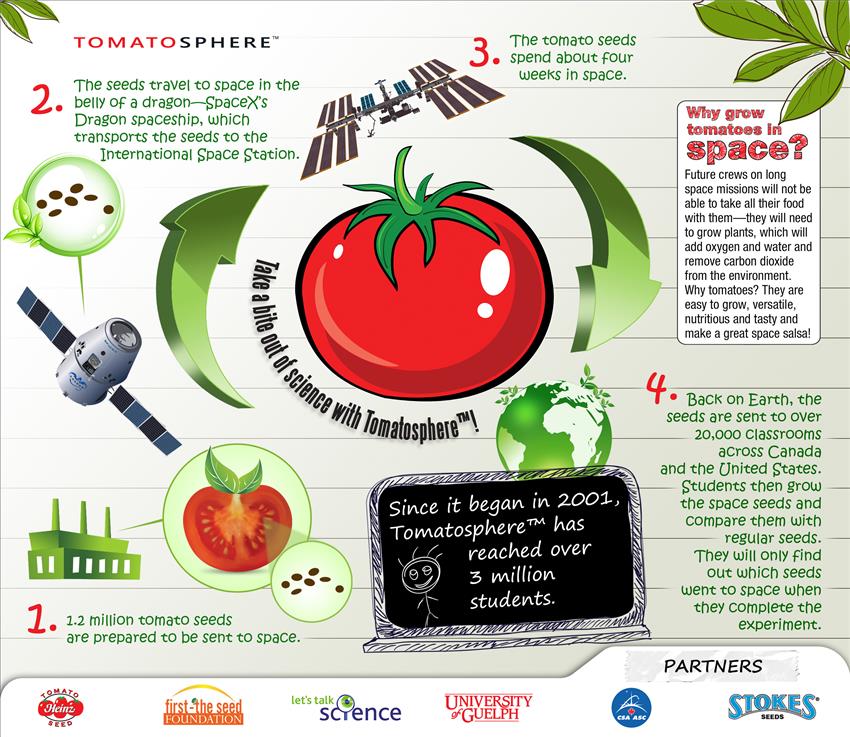Tomatosphere™: Sowing the seeds of discovery through student science
Is it possible to grow fruits and vegetables in space despite the challenges of weightlessness and radiation? What types of seeds could germinate in space's hostile conditions? Since , over three million students across Canada and the United States have worked to answer those questions by taking part in the Tomatosphere™ program. This educational project's hands-on approach to learning gives students a real taste for science.
European Space Agency (ESA) astronaut Thomas Pesquet explains the Tomatosphere™ project. (Credits: Canadian Space Agency [CSA], NASA, ESA, Let's Talk Science)
Space agencies around the world are working to send humans to Mars. Since bringing enough food for a mission lasting two to three years would be too expensive and impractical, astronauts will have to grow their own healthy food while in space.
In the closed environment of a spacecraft, plants grown on board can make a huge contribution to life-support systems. Plants can provide food, produce oxygen, and recycle carbon dioxide and some organic waste.
How to participate
The teacher orders a seed kit.
Two batches of seeds will be sent:
- A batch that has been exposed to the space or space-like environment
- A batch of control seeds, for comparison
- The students grow all of the seeds in the classroom "
blind
," without knowing which are space seeds. - They measure and record information about the tomato plants including germination rates and growth patterns.
- They submit the results online so that they are available to scientists who study horticulture and environmental biology.
- The students bring the tomatoes home and make a salsa that's out of this world!
Teaching students to think like scientists
By participating, students can:
- awaken their interest in science and space
- discover related STEM topics such as
- the science of plants
- life cycles and ecosystems
- health and nutrition
- space travel and exploration
- agriculture on Earth and in space
- enjoy the satisfaction of bringing home their own "
space tomatoes
" - know that they are personally contributing to future space exploration
Why tomatoes? Because they are easy to grow, versatile, nutritious and delicious. In , over 272 million kilograms of tomatoes were grown in Canadian greenhouses.
Partners
The Tomatosphere™ project is a collaboration between:
Explore further
- Space activities for youth and educators
- Canadian science on the International Space Station
- Astronauts
- Date modified:



